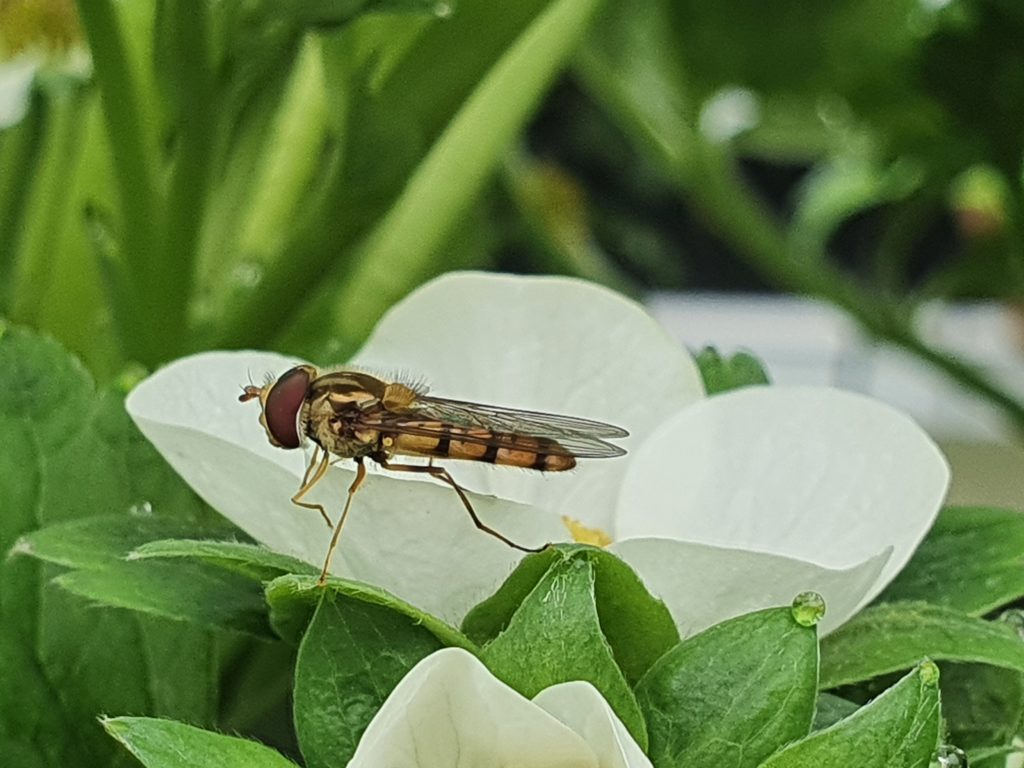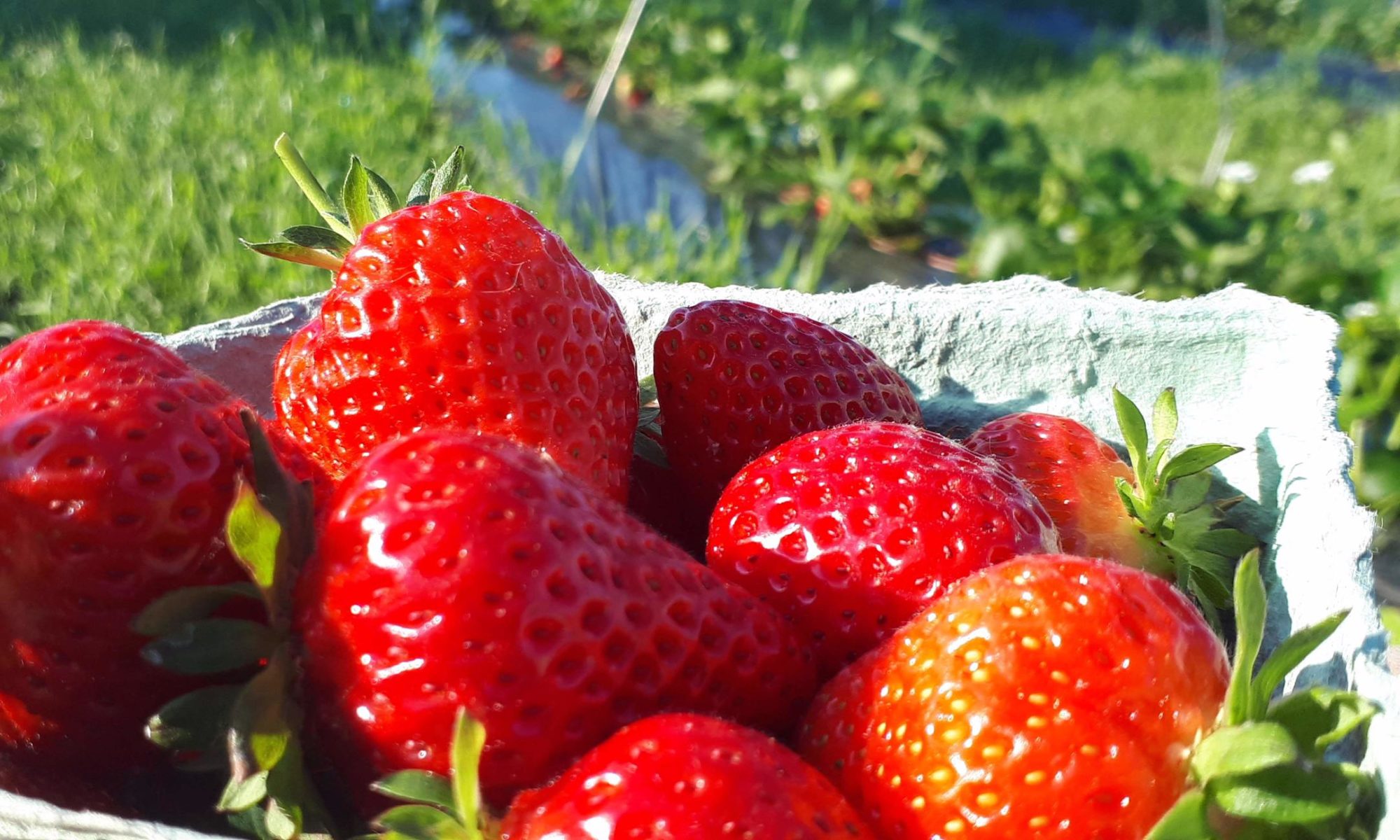The whole relation between plants, insects, climate is an interesting and complex one. Same structures, same greenhouses, same varieties and yet completely different development, balances in the plant.
Last week: 2 greenhouses from one grower. One greenhouse with gras between the rows, one with anti rooting cover between the rows.
Not only the strawberry plants develop completely different, also the predators. With the anti rooting cover on the soil, or the widely used white plastic in glasshouses it is not always easy to establish predators in the crop. With grass between the rows, in a lot of cases natural predators occur.
Climate – predators
What i have seen so far over the years, that in moderate outside or greenhouse climates predators develop easily. Climates a little more humid, with temperatures and humidity not going up and down, is much better for the predators.
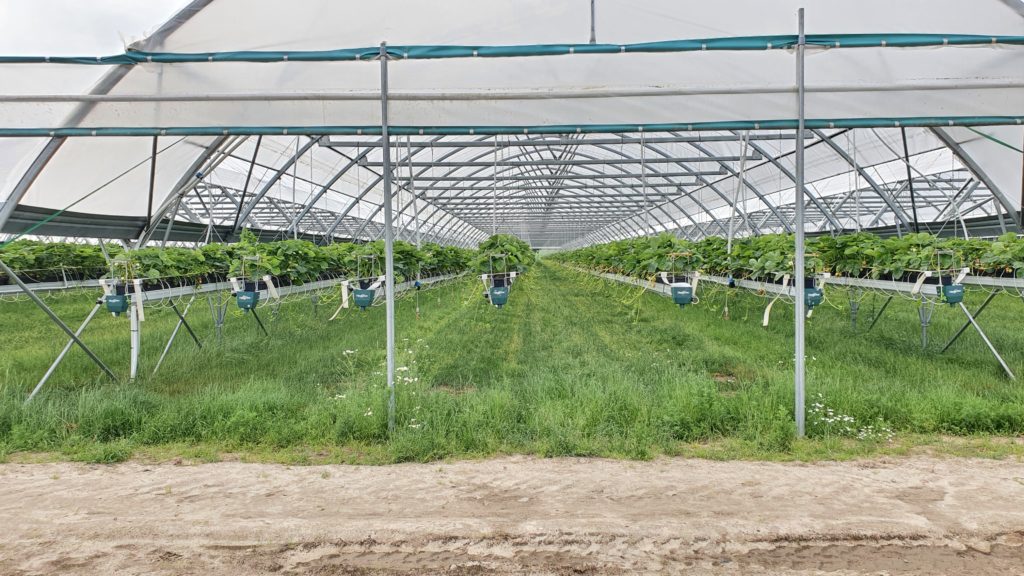
predators – predators
Another interesting item is predators eating predators. Recent research from Wageningen WUR showed there is quite a strong interaction of predators eating predators. Not only orius eating eggs of Aphidoletes. But also orius eating aphids. And different predatory mites eating each other, or each others eggs.
The same i used to see in greenhouses without chemical controll of insects. Spider populations developing quite fast. Good for some predation of at least flying aphids. But unfortunately also Aphidius types of predators of aphids.
If you would like to read something more about hyperpredation of predators among each others: https://link.springer.com/content/pdf/10.1007/s10526-012-9462-2.pdf
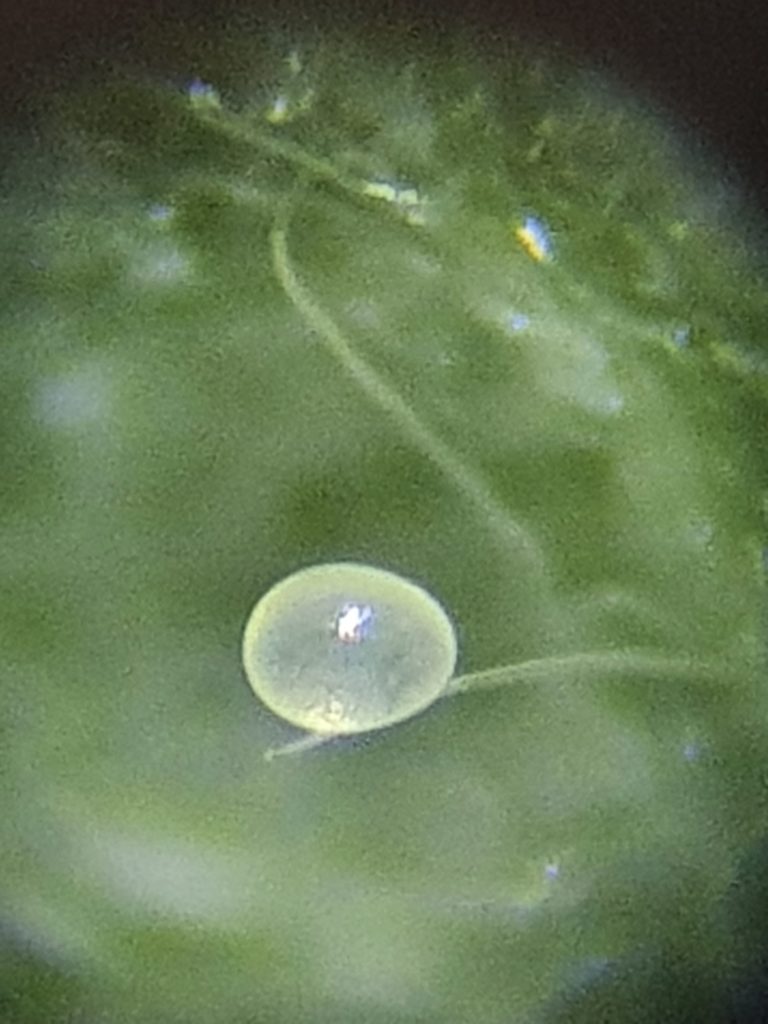
Climate strawberries
As all plants do, also for strawberries climate is very important. Especially stability of the climate. As soon as the fluctuations in the climate are getting big (high-low temperature / high-low humidity) plants don’t develop very good, health problems (milldew).
In Western Europe, we have tried to solve this with highpressure humidification, but in contrary to what we would expect: more milldew. Plants seemed to get a kind of lazy and as soon as we were to late with humidification, got milldew.
In greenhouses with table tops and grass underseeded, inside temperatures can be till 7oC lower as outside temperatures. In greenhouses with black anti rooting cover, temperatures used to be 3-5 oC or more higher as outside. A huge difference.
Habitat / hidingplaces / food
In case of tabletops (outside), areas with a lot of flowers may stimulate orius, aphidius, hoverflies, lacewings. A lot of natural predators occuring and settling in a field.
Several growers in the Netherlands started with using non productive areas for seeding flower combinations attractive for predators.
I have seen balances within this flower areas of orius – thrips, aphids – hoverfly+lacewing.
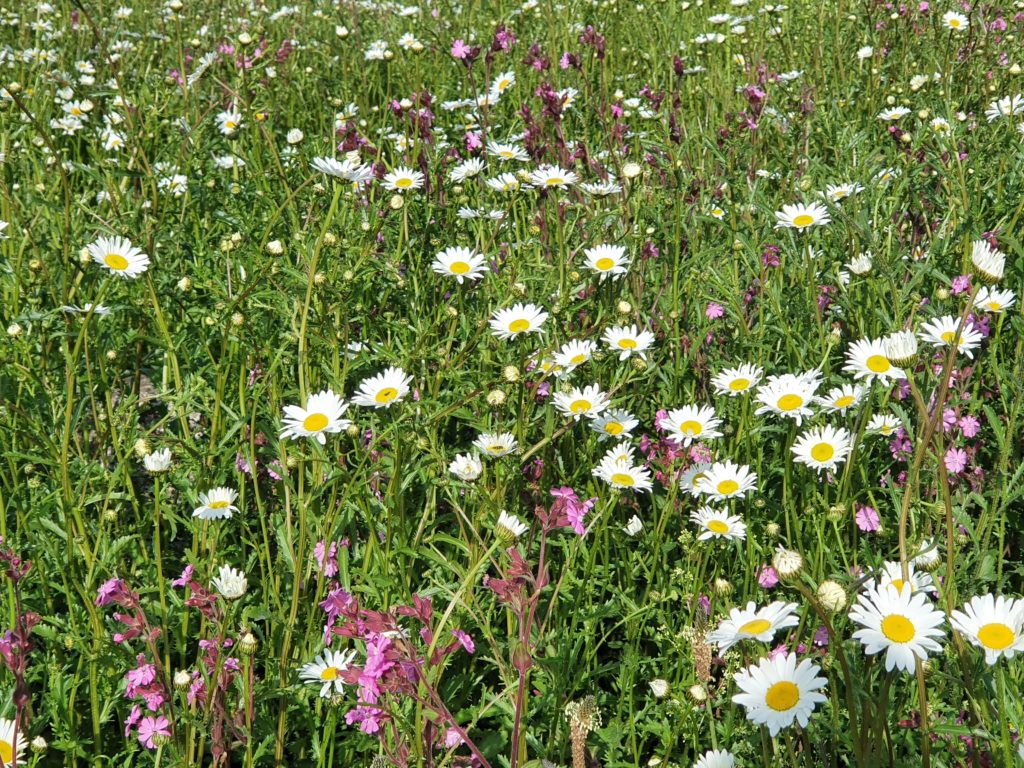
Summary
Growing biological strawberries is much more as just introducing predators. Possible hidingplaces, climate, interaction between predators is very important. Try to think of as much interactions between strawberries – predators – climate – habitat etc as possible and use them to optimize your IPM strategy.
